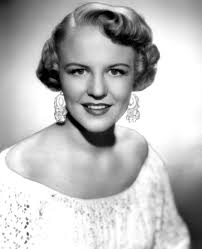
Here are a few more gleanings from Chuck Palahniuk’s estimable “writer advice” book, Consider This. Yesterday’s post featured the first group of ideas that might make you better at the trade. Today, the final set. Enjoy!
- “If you can identify the archetype your story depicts, you can more effectively fulfill the unconscious expectations of your reader.” — CP
- Readers relate when authors tell what’s known as an “awful truth.” Imperfect characters making mistakes are a reader’s delight. For one, the reader feels, “I’m not alone,” and for two, the reader feels, “Better him than me. What a train wreck! I can’t take my eyes off this!”
- Or, as CP puts it: “People love to see others suffer and lose.” (If it helps, think politics, 2020.)
- “Great problems, not clever solutions, make great fiction.” — Ira Levin
- Know the difference between a story’s horizontal and its vertical. “Horizontal” = sequence of plot points, whereas “vertical” = pausing to deepen risk and tension because it is a key scene worthy of extra details and action. Too much of one (particularly horizontal) over the other will lose your readers’ interest.
- Your plot should have a metaphorical (or sometimes real) “clock” or “gun” that readers are aware of. These may disappear, but readers should, in the back of their minds, be worried about time running out or the threat of some weapon. There are many variations, but these “plot drivers” keep the writer honest and the reader on her toes. Think James Bond movies.
- For tension, use unconventional conjunctions sometimes for a whitewater-rushing effect that carries the reader through a particularly suspenseful scene.
- Tension can also be harnessed through the use of an object the author recycles throughout the plot. When it reappears, the reader says, “A-ha!” or becomes nervous and wary, or begins to sleuth a bit to figure matters out. Reappearing objects are tension devices.
- Avoid tennis-match dialogue.
- “Never resolve a threat until you raise a larger one.” — Ursula K. LeGuin
- Do not use dialogue to further the plot.
- No dreams! Ever.
- “You don’t write to make friends.” — Joy Williams
- To mix things up in a novel, change the setting. Take your characters on a “second-act road trip.”
- Use joy and humor as occasional relief when the going gets rough or the plot gets particularly frightening or suspenseful.
- It is OK to depict questionable behavior in a book. Just don’t endorse or condemn it. This is the reader’s task.
- “Any time you deny a possibility, you create it at the same time.” — CP
- “If you can’t be happy washing dishes, you can’t be happy.” — CP
- One troika of character types frequently used by writers: a.) the character who follows orders, is shy and agreeable, is an all-around good boy or girl; b.) the rebel who bullies, breaks rules, brags; c.) the quiet, thoughtful one who often acts as narrator observing the conflict of the first two.
- Do not let death resolve your story. Who do you think you are — Shakespeare?
- Reject humdrum, believable material in favor of the actual wonders surrounding you in this world. This comes under the category of truth being stranger than fiction, so make those truths PART of your fiction.
Of course, there’s a lot of fleshing out of these ideas with examples from many books, so if the list piques your interest, pick up a copy of Palahniuk’s book.
Oh. And get yourself in a writer’s workshop group. Although Ken Kesey said, “All workshops suck at some point,” they do force you to write when it’s your turn to make copies and get critiqued.
Plus you learn from the writers around you—both better ones and worse ones.

